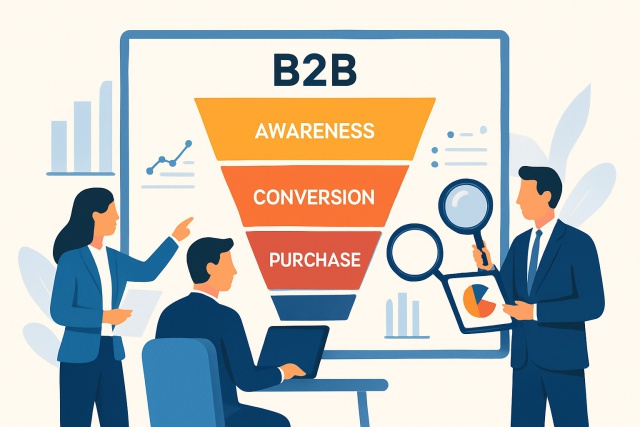What Is Direct Response Marketing And How It Works


Direct response marketing is a sharp no-nonsense advertising strategy designed to spark an immediate reaction from your audience—whether that means making a purchase, signing up for a newsletter or asking for more info. Unlike traditional marketing that plays the long game by slowly building brand awareness, direct response marketing goes straight for the jugular with clear, quick calls to action you can track in real time.
What Direct Response Marketing Is All About
Direct response marketing is all about connecting straight away with potential customers to get an immediate measurable reaction. This could be anything from picking up the phone, clicking a link, filling out a form or sealing the deal with a purchase. The whole point is to ignite a quick response so advertisers can instantly gauge how their campaigns are holding up. It leans heavily on clear and compelling calls to action and often customizes messages for specific audience segments.
Traditional brand marketing usually aims to build lasting recognition and a friendly impression, without holding its breath for an immediate sale. Direct response marketing demands a clear action right off the bat and dishes out results you can actually measure.
- A clear and direct call to action that leaves no room for confusion and gently nudges the audience on what to do next.
- Results that can be tracked through handy metrics like clicks, calls and conversions so you actually know what’s working.
- Audience segmentation to deliver messages that feel genuinely relevant and timely enough to catch their attention.
- Personalized messages tailored to individual needs or interests, making each person feel seen.
- Use of multiple channels—think email, social media, direct mail and telemarketing—to widen the net and keep things convenient for everyone involved.
What Exactly Is Direct Response Marketing, and How Does It Really Work?
Direct response marketing works through a straightforward process designed to connect with your audience and boost conversions while tweaking things along the way for better results. It kicks off by truly understanding your audience and crafting an offer that grabs their attention. After that, you send your message through the right channels and watch how people respond. You then make adjustments to sharpen future campaigns.
Dive into solid research about your audience to know their demographics and behaviors and the challenges that keep them up at night.
Craft a strong offer with clear persuasive messaging that shines a spotlight on the key benefits everyone is looking for.
Pick communication channels that naturally click with your audience and feel just right for starting a conversation.
Launch the campaign using handy tools like email automation, social media ads or good old direct mail—whatever floats your boat.
Keep a sharp eye on response rates by tracking links, call data or coupon redemptions. It’s like having a backstage pass to the action.
Look at the data to figure out what hit the mark and tweak your future campaigns based on those insights.
Common channels for direct response marketing usually involve email newsletters packed with clickable offers that practically beg you to click. Social media ads are designed to get you to buy on the spot. Dedicated landing pages are crafted with conversions in mind. Then you have the trusty old physical direct mail coupons sent straight to select recipients' mailboxes and good old telemarketing calls nudging you towards placing an order or booking an appointment.

Visual diagram illustrating the step-by-step direct response marketing workflow
Key Elements That Really Make Direct Response Marketing Click
Successful direct response marketing campaigns usually have a few key tricks that help them shine and deliver real results. Often this means crafting a sense of urgency with limited-time offers you just can’t ignore. Pair that with a clear and compelling call to action and keep a close eye on every response using savvy tracking tools.
- A clear and direct call to action that leaves no room for guesswork about what to do next.
- Appeals to urgency or scarcity that gently nudge people to act sooner rather than later, like can’t-miss limited-time discounts.
- Simple straightforward steps to complete the desired action make the whole process feel less like a chore and more like a breeze.
- Offers that speak to the heart by aligning with the interests and needs of the audience so it feels less like a pitch and more like a personal recommendation.
- Integrated metrics and tracking tools help keep a close eye on response rates and ROI so you know exactly what’s working and what’s not.
Your call to action works like a bright, unmistakable road sign on a jam-packed highway. Skip it, and your audience could easily miss the exit that takes them straight to your offer. Ambiguity? Well, that usually just throws a wrench in the works and tends to kill your response rates.
Typical Examples and Varieties of Direct Response Marketing that Actually Work
Direct response marketing appears in many forms designed to get consumers to act quickly. Think of email campaigns with irresistible clickable buttons or social media ads that let you buy something instantly. There are direct mails landing in your mailbox with coupons ready to be used. Pay-per-click (PPC) ads guide people directly to landing pages. Telemarketing calls offer a personal one-on-one touch.
- Email marketing campaigns that include direct links making it easy to purchase or sign up right away.
- Social media ads with 'Buy Now' or 'Sign Up' buttons crafted to nudge you into action.
- Direct mail packed with personalized coupons or special discount codes because who doesn’t love VIP treatment?
- Pay-per-click ads targeting keywords that usually scream ‘ready to buy’ to speed up conversions.
- Telemarketing calls designed to spark quick responses whether it’s booking a spot or getting more info cutting through the noise with a friendly nudge.
| Type | Description | Typical CTA | Best Use Case | Tracking Method |
|---|---|---|---|---|
| Email Campaigns | Personalized emails packed with clickable offers that feel just right | "Shop Now", "Subscribe" | Perfect for driving e-commerce sales and expanding your newsletter family | Keeping tabs on clicks and email opens, because you want to know who’s really interested |
| Social Media Ads | Paid ads on popular platforms like Facebook and Instagram that catch the eye | "Buy Now", "Learn More" | Great for launching new products and stirring up leads like a pro | Relying on conversion pixels and measuring how much buzz you create |
| Direct Mail | Good old-fashioned physical coupons or offers landing right in the mailbox | "Redeem Coupon", "Call Now" | Ideal for promoting local events and giving your brand a friendly boost | Watching coupon redemptions and QR code scans to see who bites |
| Pay-Per-Click Ads | Search engine ads where you only pay when they click - smart and efficient | "Get a Quote", "Download" | Spot on for targeting customers who really mean business and are ready to buy | Tracking click-through rates and cost per conversion, keeping your ROI in check |
| Telemarketing Calls | Direct, real voices reaching out to potential customers, cutting through the noise | "Order Now", "Book Appointment" | Handy for handling customer service and sealing the deal with order placements | Using call tracking and scheduling appointments so nothing slips through the cracks |
Measuring Success in Direct Response Marketing
Tracking and analyzing key metrics is really at the heart of direct response marketing because it gives marketers a clear picture of just how well their campaigns are pulling weight. The main signs of success usually include conversion rates which tell you how many individuals actually followed through, response rates that highlight how engaged the audience truly is, cost per acquisition showing the campaign's efficiency, and overall return on investment to judge whether marketing dollars are well spent.
- Conversion rate shows the slice of individuals who actually follow through and complete the action you’re hoping for after seeing your message.
- Click-through rate is all about how many curious eyes clicked on those links inside your digital ads or emails.
- Cost per response breaks down what it costs you to get each little reaction or lead rolling in.
- Customer acquisition cost adds up all the investment it takes to bring a new customer on board. It is not always cheap but often worth every penny.
- Lifetime value tracking keeps an eye on the total revenue you can expect from customers snagged through your campaigns and gives you the long game perspective.
To really squeeze the most juice out of direct response marketing, you’ve got to lean on reliable tracking tools and regularly dig into the data. This is where the magic happens: finding sneaky areas begging for improvement. Tools like Semrush and Moz come to the rescue with detailed analytics that help marketers break down performance and spot trends while experimenting with fresh strategies.
Effective Approaches to Creating Direct Response Marketing Campaigns That Really Click
To build direct response campaigns that actually convert, start by diving deep into researching and segmenting your audience so you can deliver messages that truly hit home. Craft clear and urgent calls to action that nudge people off the fence and into action without delay. Keep experimenting with different offers and messaging styles, mix up your communication channels.
- Study and categorize your audience by demographics and preferences as well as behaviors—get to know who is on the other side of the screen.
- Craft clear and concise calls to action that create a sense of urgency or highlight a special opportunity. Think of it as your gentle nudge to take action.
- Experiment with different offers and messages or visuals to discover what truly clicks with your crowd. Sometimes it’s the unexpected that wins hearts.
- Use a mix of channels like email, social media and direct mail to widen your net—casting a variety of lines can reel in more than you’d expect.
- Keep a close eye on performance data and tweak your campaigns accordingly. It’s a bit of trial and error but that’s where the magic happens over time.
Frequent Misunderstandings About Direct Response Marketing That Often Trip People Up
Many marketers often steer clear of direct response tactics because of common myths that paint it as too sales-driven or only suited for a handful of industries. Some also think it is tricky to measure with any precision. When you apply direct response marketing thoughtfully it can complement brand building nicely, fit a surprising variety of sectors and leverage sophisticated tracking tools to deliver clear insights.
- Direct response marketing isn’t just for sales-driven businesses. It can actually boost almost any marketing strategy out there.
- When you nail it, it’s not pushy or annoying. Instead, customers get offers that genuinely feel relevant and valuable.
- Some results pop up quickly, and often these campaigns quietly chip away at conversions over time.
- It’s not a substitute for brand building, but rather a handy sidekick that drives clear and trackable actions.
- Successful campaigns can work with just about any budget and scale gracefully from mom-and-pop shops to big players.
Summary A Straightforward Look at Direct Response Marketing and How to Make It Work for You
Frequently Asked Questions
How quickly can I expect to see results from a direct response marketing campaign?
You can often spot initial results almost immediately since the whole point is to spark instant action. Metrics like clicks, calls and form submissions pop up in real time—seasoned marketers live for that kind of instant feedback. That said, turning those numbers into meaningful insights to boost your return on investment and customer value is an ongoing dance that calls for consistent tweaks and fine-tuning.
Is direct response marketing only effective for low-cost, impulse-buy products?
That’s a pretty common myth but not quite the whole story. Direct response marketing plays well with high-value products and services too—think B2B software, consulting gigs or the financial world. It really boils down to crafting a compelling offer and a crystal-clear call to action that justifies the spend—whether that’s scheduling a demo or downloading a detailed whitepaper. It’s less about the price tag and more about the ‘why now’.
What is the most important element of a direct response advertisement?
The absolute must-have? A call to action that leaves zero room for doubt. You want it loud and clear: click here, call now or request a quote—no beating around the bush. Sure, this call gets backup from an enticing offer and a sprinkle of urgency but without that direct nudge the campaign’s chances of delivering measurable results take a nosedive.
Can I use direct response marketing if I have a very small budget?
Absolutely. Direct response marketing is pretty much tailor-made for shoestring budgets because you get to track exactly where every penny goes. Starting with cost-effective routes like targeted email blasts or social media ads lets you keep an eagle eye on cost per acquisition and then ramp up whatever’s pulling its weight. It’s a smart nimble way to stretch your dollars without breaking a sweat.
How does direct response marketing work with long-term brand building?
Far from butting heads, they actually make a great team. Brand marketing slowly builds awareness over the long haul while direct response campaigns zoom in on provoking specific actions that fill up the sales funnel. Plus the insights you gather from those quick-hit campaigns—what offers land and which messages resonate—can seriously sharpen and steer your broader brand strategy. In my experience it’s like having your cake and eating it too.
Further Reading
Unleash Your SEO Prowess with Semrush
Are you struggling to boost your online visibility and drive more traffic to your website? Semrush is the ultimate SEO and digital marketing tool that can take your Internet Marketing game to new heights. With its powerful suite of features, you can gain a comprehensive understanding of your market, optimize your content, and outrank your competitors.
- Uncover Profitable Keywords with Advanced Research
- Analyze Your Site's Health with Detailed Audits
- Monitor Backlinks and Stay Ahead of Competitors
- Streamline Content Creation with Insights and Trends








